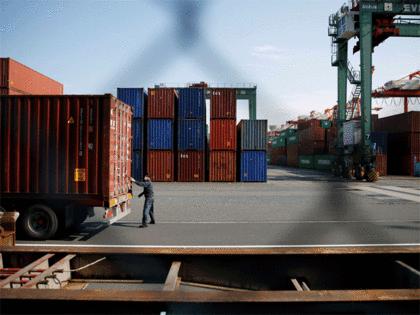In the dynamic world of logistics, transport, and shipping, one key metric reigns supreme – Profit Before Interest and Tax (PBIT). This critical indicator serves as the compass guiding businesses through the complex web of operations, costs, and revenue streams in the realm of moving goods from point A to point B. Join us as we delve into the fascinating world of PBIT in the logistics industry, exploring how it shapes strategies, drives decision-making, and ultimately determines success in the fast-paced world of supply chain management.
Boosting PBIT through Route Optimization and Efficiency Measures
In the world of logistics, transport, and shipping, maximizing Profit Before Interest and Tax (PBIT) is crucial for sustained growth and success. One effective way to boost PBIT is through route optimization and efficiency measures. By carefully analyzing and optimizing delivery routes, companies can reduce fuel costs, decrease travel time, and improve overall productivity.
Implementing efficiency measures such as investing in advanced technology like GPS tracking systems, utilizing data analytics to identify bottlenecks in the supply chain, and streamlining processes can further enhance profitability. By continuously seeking ways to optimize operations and improve efficiency, companies can increase their PBIT margins and stay competitive in the fast-paced world of logistics and transportation.

Implementing Technology Solutions for Enhanced Profitability in Logistics
When it comes to optimizing profitability in logistics, implementing technology solutions is crucial for success. By leveraging cutting-edge tools and software, companies can streamline operations, increase efficiency, and ultimately drive higher profits. From advanced inventory management systems to real-time tracking and route optimization software, the possibilities for enhancing profitability in the logistics industry are endless.
One key technology solution that can have a significant impact on profitability is the use of autonomous vehicles for transportation and shipping. By employing self-driving trucks and drones, companies can reduce labor costs, minimize human error, and speed up delivery times. Additionally, incorporating blockchain technology for secure and transparent supply chain management can provide greater visibility and accountability, leading to improved decision-making and cost savings. With the right technology solutions in place, logistics companies can achieve higher Profit Before Interest and Tax (PBIT) margins and gain a competitive edge in the market.

Strategies for Cost Reduction and Increased Profit Margins in Shipping Operations
When looking to improve profit margins in shipping operations, it is crucial to evaluate current strategies and identify areas where cost reduction can be achieved. One effective strategy is to optimize shipping routes to minimize fuel consumption and reduce transportation costs. By utilizing data analytics and predictive modeling, companies can identify the most efficient routes and make informed decisions that result in savings.
Another way to increase profit margins is to negotiate favorable terms with suppliers and carriers. By leveraging economies of scale and building strong relationships with partners, companies can secure better rates and discounts on shipping services. Additionally, implementing technology such as transportation management systems (TMS) can streamline operations, improve visibility, and reduce inefficiencies, leading to cost savings and ultimately higher profits.

Maximizing PBIT by Streamlining Transport Processes and Supply Chain Management
When it comes to maximizing Profit Before Interest and Tax (PBIT) in your business, focusing on streamlining transport processes and supply chain management can make a significant impact. By optimizing these key areas, you can reduce costs, improve efficiency, and ultimately increase your bottom line.
One way to streamline transport processes is by implementing a real-time tracking system for your shipments. This allows you to monitor the movement of goods from point A to point B, ensuring timely delivery and reducing the risk of delays. Additionally, optimizing your supply chain management involves collaborating with strategic partners to improve inventory management, reduce lead times, and enhance overall operational performance.
Wrapping Up
In conclusion, understanding Profit Before Interest and Tax (PBIT) in the logistics, transport, and shipping industries is crucial for businesses to assess their financial performance and make informed decisions. By analyzing PBIT, companies can gain insights into their operational efficiency, profitability, and potential for growth. With the right management of costs and revenue streams, businesses can strive to optimize their PBIT and achieve sustainable success in the dynamic world of logistics and transportation. Thank you for reading and stay tuned for more insights into the fascinating realm of business finance.
